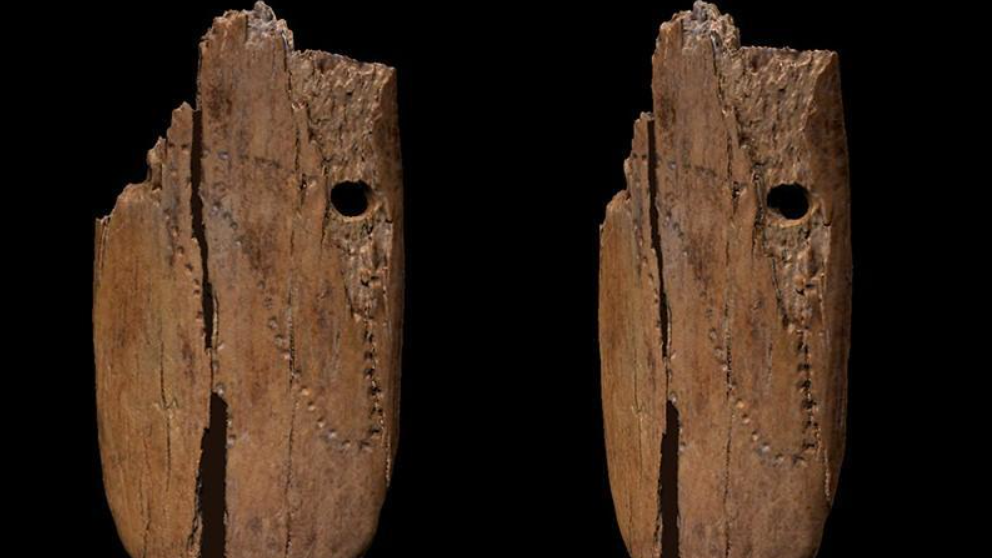According to archaeologists, a newly discovered pendant carved from a woolly mammoth tusk could be the oldest surviving jewellery developed by humans. The pendant is dated to be 41,500 years old. The pendant was found in southern Poland inside the Stajnia cave. The carbon dating results, which determined the jewellery piece’s age, were published in Scientific Reports on November 25.
The carbon dating has established that the pendant is thousands of years older than artifacts decorated similarly and found in other sites. In the Stajnia cave, the other objects found include an awl, a pointed tool used in making holes. The Stajina awl was 7-centimetre-long and carved from a horse bone.
The pendant from the Stajnia Cave has two holes drilled in it along with 50 other puncture marks (dots), the researchers reported in their research. Interestingly, the dots create a looping curve. However, the actual meaning of these dots remains elusive. The researchers say that they may represent a counting system or a lunar observation, or something else. The radiocarbon dating has suggested that the mammoth tusk used to make the pendant was around 41,730 to 41,340 years ago. The awl was found to be 42,000 years old.
Pointing to the fact that the design of the pendant is of the same age as the mammoth tusk, Sahra Talamo, the lead author of the research, said, “An old mammoth tusk would have been unworkable for shaping the Stajnia ornament and carving the punctate motif.”
Sahra Talamo is a chemist at the University of Bologna, Italy. Mammoth tusks were not preserved very often in the region because of the ecological conditions.
Talamo and her team compared their findings with other objects that contained similar dotted patterns found from the archaeological sites of Germany, France, Russia and the Siberian Arctic. The team found that the Stajnia pendant was older than others similarly decorated objects found elsewhere.
Laura Basell, an archaeologist at the University of Leicester, UK, commented on the findings, “Whoever made the artifacts from Stajnia clearly had language, and the nature of the artifacts themselves give us a fascinating insight into what the makers may have valued and their world,” says Laura Basell, an archaeologist at the University of Leicester, UK.
“It is reasonable to suggest that horses and mammoths were really important in their lives and these objects have meaning on multiple levels.”
However, other experts have caveats. The team suggested that the pendant may be the oldest piece of jewellery in Eurasia. Martin Porr from the University of Western Australia, Perth, commented that the pendant bears significance. Porr said that the researchers restricted comparisons to other artifacts that have been decorated with puncture marks and did not include items of a similar age that could also have been used as jewellery.
“It’s not helpful to view this object in relation to an origin narrative of a whole tradition,” he said.
Talamo, on the other hand, said, “The pendant of Stajnia is the only decorated artifact of its kind [that has been] directly radiocarbon dated, and the comparison with the other punctuated ornaments shows it is the oldest. We do not suggest an origin of this decorative pattern in Poland — we support the hypothesis that similar decorations appeared independently across Europe.”
She added, “Further investigations in central-eastern Europe will unveil new paths of development of personal ornaments.”





